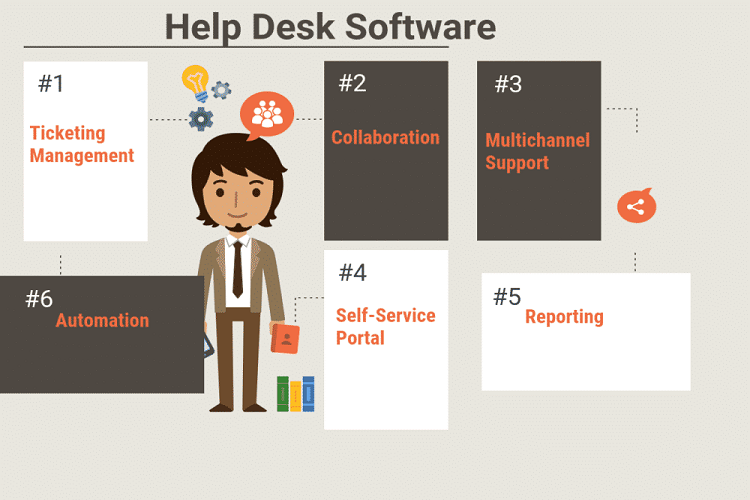Addressing the many technical questions and issues that come up in your business is rarely a small matter. Fortunately, there are tools to help your IT workers stay on top of things for both fellow employees and concerned customers. Smart use of an in-house help desk equips your workers with the means to more quickly and easily resolve technical issues, satisfying customers and minimizing lost productivity. Here are some aspects of how help desk software can be leveraged in this way.

Table of Contents
Establishing a Point of Contact
The primary function of a help desk is to offer a single interface towards which questions can be directed. This is generally done with issue tracking systems that record submitted questions or problems as tickets, complete with the user that submitted them and allow specialists to effectively address and respond to them. Once an issue is resolved, it can be marked so and, optionally, saved for future reference. Issue tracking systems often also provide a means for integration with email, automatic diagnostics tools and more, collecting reports all under these tickets.
Such a system has several benefits, including consolidating multiple channels and methods of contact, making it easier to get back in touch with users and reducing the likelihood of issues going ‘under the radar’ and being left unresolved.
Allocating Resources
Having all issue tickets in one place for the help desk technicians to access also means that their time, efforts and knowledge can be more efficiently utilized. A technician that is unable to solve a problem can refer it to a colleague more knowledgeable and capable, and multiple workers can collaborate and put their expertise together in solving ongoing issues. The issue tracking system facilitates this by letting agents send tickets along to each other or to other groups, as well as making them visible to multiple parties. In this way, IT agents aren’t required to tackle issues on their own.
Allowing Self-Service
The old adage about teaching a man to fish applies to information technology, too. Part of effectively using the resources of your help desk is equipping workers and customers with the ability to pursue their own solutions on common questions and problems. Many help desk software systems also come with support for establishing what is known as a knowledge base, a repository built to store, handle and display complex information and documentation. More than a database, a knowledge base focuses on accessibility and interconnection between entries. This means information storage is crucial to allow users that are not professionally trained in IT problem solving to be able to locate potential solutions, freeing help desk agents up to handle more complicated and higher priority issues within the business.
Providing Transparency
Issue tracking has another major benefit in that it inherently sets up transparency and accountability for problem resolution. Agents can see the progress on current issues, check older issues to see how they were resolved and by whom, mark tickets for revisiting if problems resurface and easily produce audits for all of these. Additionally, users have a means of easily checking up on the status of the issues they’ve submitted so they can be sure that their problems are being addressed. At the same time, information on issues can be provided on a need-to-know basis to preserve confidentiality and security as needed and to make locating relevant information easier by decluttering what an employee has access to viewing.
The help desk is a central point for addressing the IT needs of your business and its clients, so it’s natural that your help desk agents are equipped to handle the responsibility. Consolidating issues and communications about them, enabling collaboration between workers and agents, empowering users to find solutions and enabling smart access to relevant information are just some of the ways in which good help desk software makes this possible.

